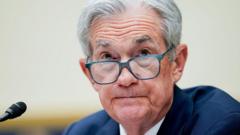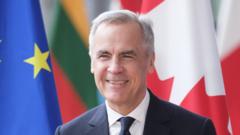With private sector investments at a decade low, experts highlight the lack of consumer demand, economic uncertainty, and structural issues facing Indian corporations as significant barriers to new investments.
India's Private Sector Profits Fail to Ignite Investment Surge

India's Private Sector Profits Fail to Ignite Investment Surge
Despite record profits, Indian private firms continue to hold back on investments, raising concerns among policymakers and economists.
India's economic landscape is marked by a perplexing trend: despite record profits, private firms are hesitating to invest in new capacities. This has puzzled economists and policymakers, leading to numerous discussions on the stagnation of private investments. The most recent data highlights that private-sector expenditure on overall investments has dipped to a decadal low of 33% of the Gross Domestic Product (GDP), a stark decline that persists since the global financial crisis in 2007.
After a brief period of increased investment rates in 2022 and 2023, the latest analysis from a prominent ratings agency has revealed a decrease in private investments, particularly among unlisted firms. Bank mogul Uday Kotak has articulated concerns about the declining entrepreneurial enthusiasm in India, advocating that young entrepreneurs leverage their inherited wealth to drive new ventures rather than staying stagnant.
Investment metrics from advisory firm Value Research indicate that Indian non-financial businesses are currently holding cash equivalent to 11% of their assets. This data supports the notion that corporations are refraining from expanding their investments. Experts cite weak urban consumption, diminished export demand, and competition from cheap Chinese imports as barriers preventing companies from increasing their operations. India's economic survey further highlights that global economic uncertainties and market oversaturation have dampened investment impulses.
Investments are critical to India's GDP, contributing around 30% of the total, and their slowdown poses implications for national growth. Analysts predict that India's GDP growth for the year may only reach 6.5%, down from 9.2% the previous year, primarily due to dwindling consumption. Key areas of growth, such as exports, are also faltering, especially under the strain of U.S. tariffs and other global challenges.
To achieve its long-term economic aspirations, India needs to boost its investment ratio to at least 40% of GDP, according to World Bank estimates. Although the Modi administration has ramped up infrastructure spending and reduced corporate tax rates, these measures have not sufficiently encouraged corporate India to invest.
JP Morgan’s Chief Economist for India, Sajjid Chinoy, emphasizes that a lack of demand is hindering businesses from justifying new investments. The post-pandemic economy has lacked swift recovery, and consumer spending has been stifled, further deterring investment despite high corporate profitability.
Former PMEAC member Rathin Roy remarks that entrepreneurs seem disinterested in generating demand and have opted to maintain wealth rather than build new ventures. He notes that many business owners discovered during the pandemic that they could generate revenue through investments instead of traditional business activities. A notable trend is the capital flowing out of India to seek returns in more favorable markets.
However, there may be signs of a potential turnaround. Icra's latest analysis suggests potential benefits from interest rate cuts and tax relief for individuals, which could boost domestic consumption. Additionally, there appears to be a renewed intent among private companies to invest, although actual capital deployment remains to be seen, especially considering ongoing uncertainties in global trade.




















